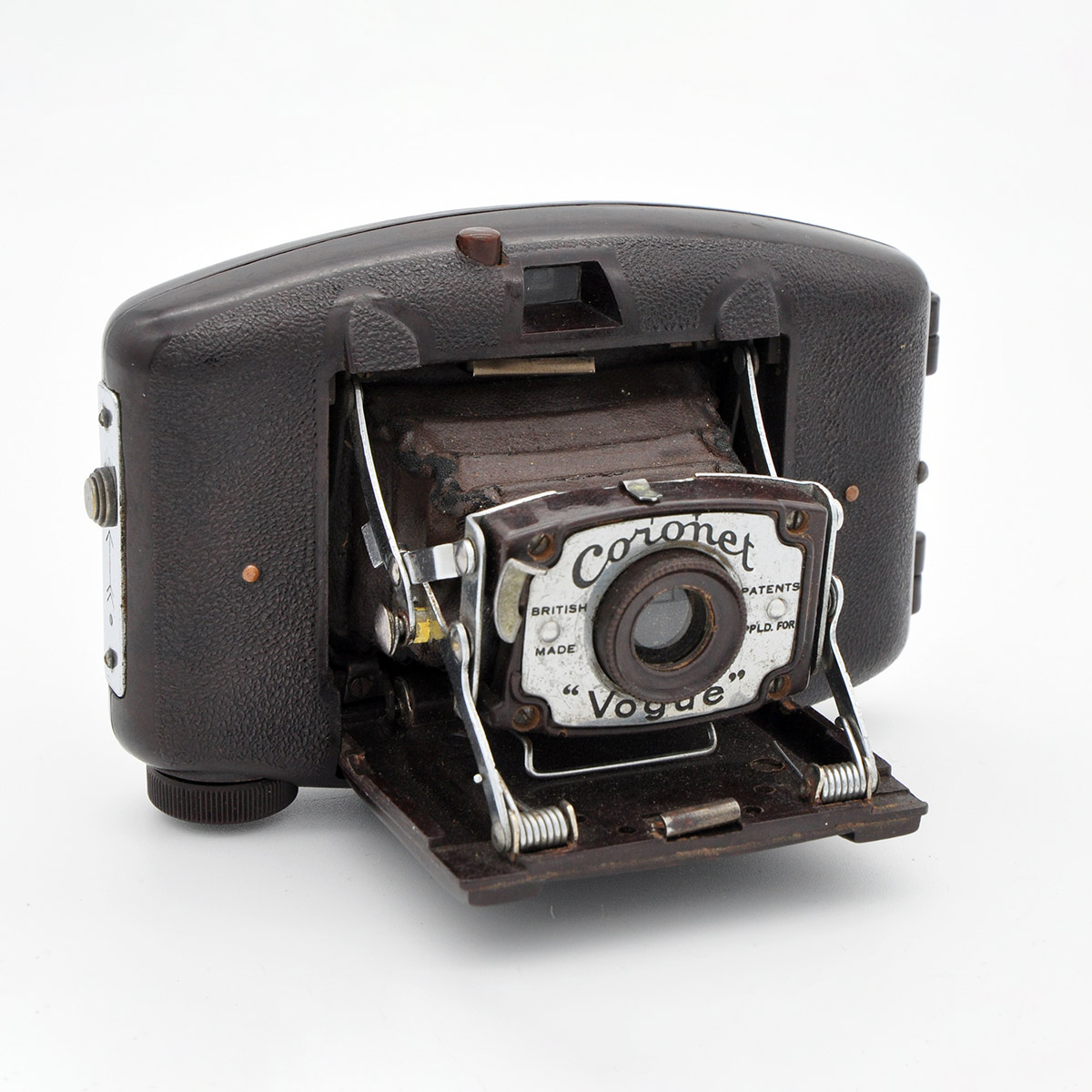Coronet Vogue
A couple of months ago I wrote about the Baby Box Tengor, a cute and stylish little box camera made in Germany in the early 1930s. This month’s camera is another sleek model, also made in the 30s, but this time in Birmingham. As a camera, the Coronet Vogue is extremely basic, with no focussing, a simple meniscus lens, and no choice of aperture or shutter speed. When folded it easily fits in the palm of the hand, and I suspect it was bought more as a fashion accessory than for taking serious photographs.
I found this one in a charity shop for £15, which was probably a bargain, as this is one of those items that appeals to two groups of people, camera collectors and Bakelite collectors, and consequently the prices can get quite high on a certain online auction site. When I acquired it, the camera was rather dirty, but a cotton bud and a soft brush soon had it looking more respectable, and everything seemed to work OK, not that there is much to go wrong with it.
This really is a camera for the display case rather than for use, as it is impossible to get the proprietary “Vogue V-35” film needed for it. The 1930s and 40s saw the introduction of a number of one off film formats, and this is one of several variations that use un-perforated 35mm film on a paper backing. The best known example of this is 828 film, which was made until as recently as 1985, and was used in a variety of mass produced Kodak cameras, rolls occasionally turn up on ebay, but although the film is the right width, the spools are not compatible with the Vogue. I’m always up for a challenge, so decided to have a go at making my own using cut down 127 backing paper and some un-perforated black and white 35mm stock. The actual image size is 3 x 5cm, which as far as I know doesn’t appear in any other formats. With a felt tipped pen to write my own numbers on the paper, and after a bit of jiggery-pokery in the changing bag, I was all ready to shoot the parsimonious six exposures that this format allowed.
With nothing to set, and no adjustments to make, the camera is very simple to use, though when the button is pressed to release the bellows, the front shoots open with such speed and force that I was left wondering if they used the same springs for this mechanism as they did in the old fashioned mouse traps!
There was no problem slipping the Vogue into a pocket and taking it wherever I went, but the limit of six exposures meant I had to choose carefully what to photograph, and I tried to get a range of subjects. In Liverpool I chose scenes which look as if they haven’t changed much in the 75 years since the camera was made.
Technically, my results were pretty poor, in fact they almost look like badly done digital fakes of old film photos, where someone has gone over the top with the effects filters. Scratches run the length of the film, and there are numerous dust spots, which I suspect are a by product of the afore mentioned mouse trap spring, whose action liberally sprinkles the film with the fine powder that the ageing leather bellows are slowly turning into. More puzzling was the fact that the centres of the images seem to be less well defined than the edges, the opposite of what one would expect from a cheap lens, though I did notice that the viewfinder lens has two elements, whereas the taking lens has only one, perhaps adding weight to the theory that this was a camera to be seen with more than to be used.
Despite the faults, I quite like the photos, and they certainly have a period feel to them, but the poor definition of the simple lens left me wondering if they might have more accurately named the camera the “Coronet Vague”.


